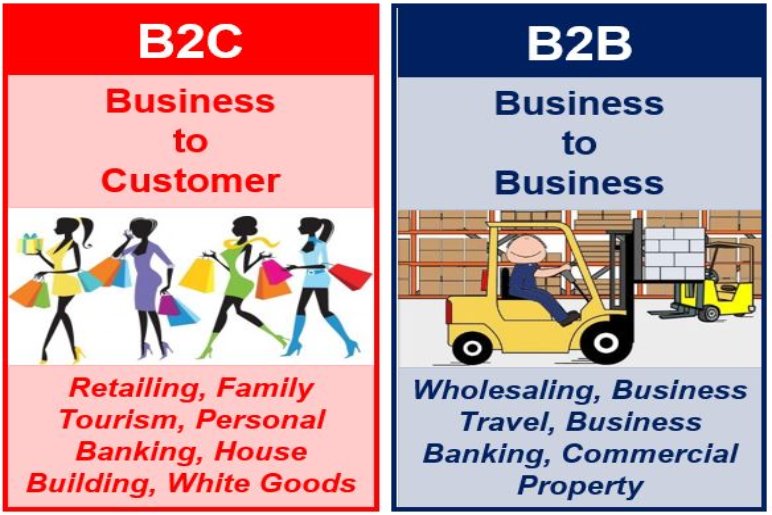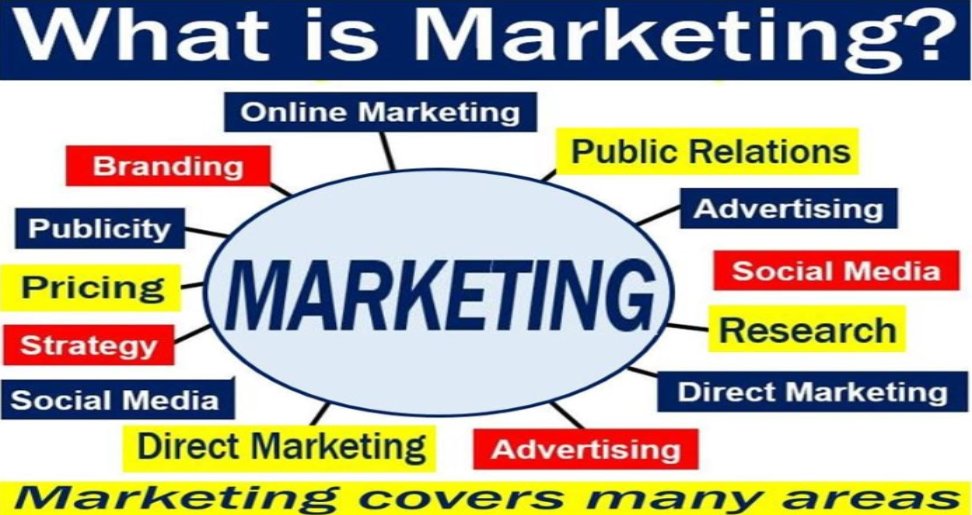Marketing is the process of creating, communicating, delivering, and exchanging offerings that have value for customers, clients, partners, and society at large. Essentially, it’s about understanding and meeting customer needs and wants through a strategic process that involves research, planning, promotion, and distribution.
The Core of Marketing

Marketing is the intricate art and science of understanding, creating, communicating, and delivering exceptional value to meet the needs and desires of target customers.
It’s a dynamic process that involves identifying customer segments, researching their preferences, developing products or services that resonate, crafting compelling messages, and establishing efficient distribution channels. At its heart, marketing is about building strong relationships with customers, fostering brand loyalty, and ultimately driving business growth. It requires a deep understanding of market trends, competitor analysis, and the ability to adapt strategies to changing consumer behaviors.
The Marketing Mix
Often referred to as the “4 Ps,” the marketing mix outlines the key elements of a marketing strategy:
Product
The product is the core of any business.
It encompasses goods, services, or even ideas that a company offers to its customers. A successful product aligns with customer needs and desires, providing value and satisfaction. Key considerations in product development include:
Features: The specific attributes and characteristics of the product.
Benefits: The advantages customers derive from using the product.
Brand: The image and reputation associated with the product.
Packaging: The design and materials used to contain the product.
Quality: The level of excellence and consistency in the product.
Price
Price is the amount customers pay for a product.
It’s a crucial factor influencing sales, revenue, and profit. Businesses must carefully consider pricing strategies based on factors such as:
Cost: The expenses involved in producing and distributing the product.
Competition: The prices charged by competitors.
Customer perception of value: The perceived worth of the product to customers.
Pricing objectives: The goals the business aims to achieve through pricing (e.g., profit maximization,
market share, penetration).
Pricing tactics: Specific methods used to set prices (e.g., discounts, bundling, price skimming).
Place
Place, also known as distribution, refers to how and where a product reaches its target market.
Effective distribution ensures products are available to customers at the right time and place. Key aspects of place include:
Distribution channels: The path a product takes from the producer to the consumer (e.g., retailers, wholesalers, e-commerce).
Supply chain management: The coordination of activities involved in producing and delivering a product.
Inventory management: Controlling the stock levels of a product to meet demand.
Location: The physical placement of retail stores or other sales outlets.
Promotion
Promotion involves communicating the value of a product to the target audience and persuading them to purchase. It encompasses various activities designed to increase awareness, generate interest, create desire, and stimulate action. Key promotional tools include:
Advertising: Paid forms of non-personal communication through various media.
Public relations: Building positive relationships with the public and media.
Sales promotion: Short-term incentives to encourage purchase (e.g., discounts, contests).
Personal selling: Direct interaction between salespeople and customers.
Direct marketing: Communicating directly with target customers (e.g., email, telemarketing).
Business-to-business marketing
Business-to-business (B2B) marketing is the strategic process of identifying, understanding, and engaging other businesses as customers. Unlike business-to-consumer (B2C) marketing, which targets individual consumers, B2B focuses on building relationships with organizations that purchase products or services to support their operations. This involves crafting compelling value propositions, tailoring marketing messages to specific industries and decision-makers, and nurturing long-term partnerships. B2B marketing encompasses a wide range of activities, including market research, lead generation, content marketing, relationship building, and sales enablement, with the ultimate goal of driving revenue growth and customer loyalty.
Marketing directly to consumers
Direct-to-consumer (DTC) marketing is a strategic approach that involves selling products or services directly to consumers without intermediaries like retailers or wholesalers.
By bypassing traditional distribution channels, businesses gain greater control over their brand, customer experience, and pricing. This model often leverages digital platforms, allowing for personalized interactions and data-driven insights. DTC companies can build stronger customer relationships by offering tailored products, exceptional service, and direct communication. While it requires substantial investment in e-commerce infrastructure, marketing, and logistics, successful DTC brands can achieve higher profit margins and cultivate loyal customer bases.
B2B + B2C marketing

B2B and B2C marketing, while distinct, often intersect in today’s complex marketplace. B2B focuses on selling products or services to other businesses, emphasizing problem-solving, ROI, and building long-term relationships. It requires a deep understanding of industry needs and complex decision-making processes. Conversely, B2C targets individual consumers, focusing on emotional connections, brand storytelling, and creating desire. It leverages channels like social media and influencer marketing to reach a wider audience. However, the lines blur as businesses increasingly rely on technology and software, making B2C consumers also business decision-makers. Successful organizations recognize this convergence, tailoring their strategies to address both B2B and B2C audiences effectively, often by highlighting how their offerings enhance both professional and personal lives.
Recruitment marketing
Recruitment marketing is the strategic application of marketing principles to attract, engage, and acquire top talent for an organization. It involves crafting a compelling employer brand, building a strong online presence, and utilizing various channels to showcase the company culture, values, and employee experiences. By creating compelling content, leveraging social media, and employing targeted advertising, recruitment marketing aims to position the organization as an employer of choice, generating a steady flow of qualified candidates and ultimately improving the quality of hires. It goes beyond traditional job postings, focusing on building long-term relationships with potential employees and nurturing a strong talent pipeline.
Marketing strategy
Marketing strategy is a comprehensive blueprint outlining a business’s approach to reaching and engaging its target audience. It encompasses a deep understanding of customer needs, market dynamics, and competitive landscapes. By defining clear objectives, target markets, and value propositions, a well-crafted marketing strategy guides the development of marketing tactics, such as branding, advertising, public relations, sales promotions, and digital marketing efforts. Its ultimate goal is to create sustainable competitive advantage by building strong customer relationships and driving profitable growth.
Typical marketing divisions
Advertising
Advertising is a strategic communication process that aims to influence consumer behavior by promoting products, services, or ideas.It involves creating persuasive messages and delivering them through various media channels to reach a target audience. By effectively crafting compelling narratives and visuals, advertisers seek to build brand awareness, generate interest, and ultimately drive sales or action. The advertising industry encompasses a wide range of activities, from market research and creative development to media planning and campaign execution.
Community Involvement
Community involvement is the cornerstone of a thriving society, fostering a sense of belonging and shared responsibility. It encompasses active participation in local affairs, volunteering for community initiatives, and collaborating with neighbors to address shared challenges. By engaging with their community, individuals contribute to its growth, enhance its quality of life, and strengthen the bonds that unite its members. Whether it’s organizing neighborhood clean-ups, supporting local businesses, or advocating for social causes, community involvement empowers individuals to make a positive impact and create a stronger, more resilient community for everyone.
Customer Service
Customer Service is the cornerstone of any successful business, representing the interaction between a company and its customers. It encompasses a wide range of activities aimed at meeting and exceeding customer expectations, from pre-purchase inquiries to post-purchase support. Effective customer service involves active listening, empathy, and a genuine desire to assist. It requires skilled professionals who can address customer concerns promptly and professionally, while also building trust and loyalty. Ultimately, exceptional customer service is about creating positive experiences that foster long-term relationships and drive business growth.
Direct Marketing
Direct marketing is a strategic approach that involves communicating directly with a targeted audience to elicit a measurable response. Unlike traditional advertising, which broadcasts messages to a broad public, direct marketing focuses on personalized interactions through channels such as mail, email, telemarketing, SMS, or direct sales. By tailoring messages to specific individuals or segments, businesses can foster a more intimate connection, build customer relationships, and drive immediate actions like purchases, donations, or inquiries. The effectiveness of direct marketing is often measured through key performance indicators (KPIs) such as response rates, conversion rates, and return on investment (ROI), allowing for precise evaluation and optimization of campaigns.
Distribution
Distribution is the critical process of making a product or service accessible to the end-user. It encompasses a complex network of activities, from efficient logistics and warehousing to strategic channel selection and inventory management. Businesses must carefully consider transportation methods, order fulfillment, and customer reach to ensure timely delivery. Effective distribution not only satisfies customer demand but also optimizes costs, reduces lead times, and strengthens brand presence. By strategically positioning products in the market, companies can gain a competitive edge and build lasting customer relationships.
Market Research

Market Research is the systematic gathering, recording, and analysis of data about a specific market, product, or service. It involves exploring consumer behavior, preferences, and trends to inform business decisions. By understanding the target audience, market size, competition, and industry dynamics, businesses can develop effective marketing strategies, product development plans, and sales approaches. Market research methodologies include surveys, interviews, focus groups, observations, and data analysis, providing valuable insights into consumer needs, market opportunities, and potential challenges.
Read More :
Featured Image Source: https://tinyurl.com/3mjx6zze

